How to Grow Salvias in Pots – Expert Tips and Tricks
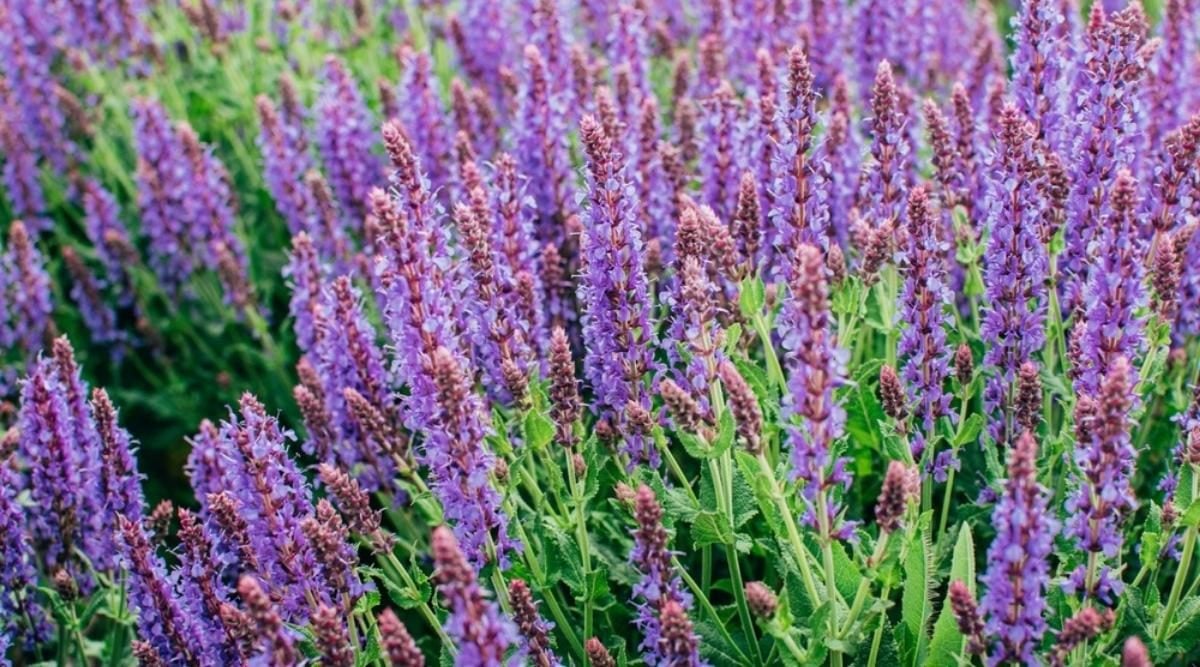
Table of Contents
Are you planning to grow salvias in pots? Then, you should definitely try it because salvia gives a beautiful and aromatic vibe to your place. With their vibrant spikes densely filled with flowers, they can add a lot of colour and texture to any garden. They are available in a variety of colours like white, red, purple, pink, and more.
Growing salvia in pots also makes them convenient to move around. You can also move them for decorations and arrangements. Therefore salvia is the perfect choice to experiment with gardening, even in limited space.
Growing salvias in pots are easy because they are tolerant to heat and drought. In fact, they help you to keep the soil quality and moisture levels in control. However, it does require much care and attention to keep it healthy and vibrant. Only it requires to be watered and pruned regularly.
Types Of Salvia
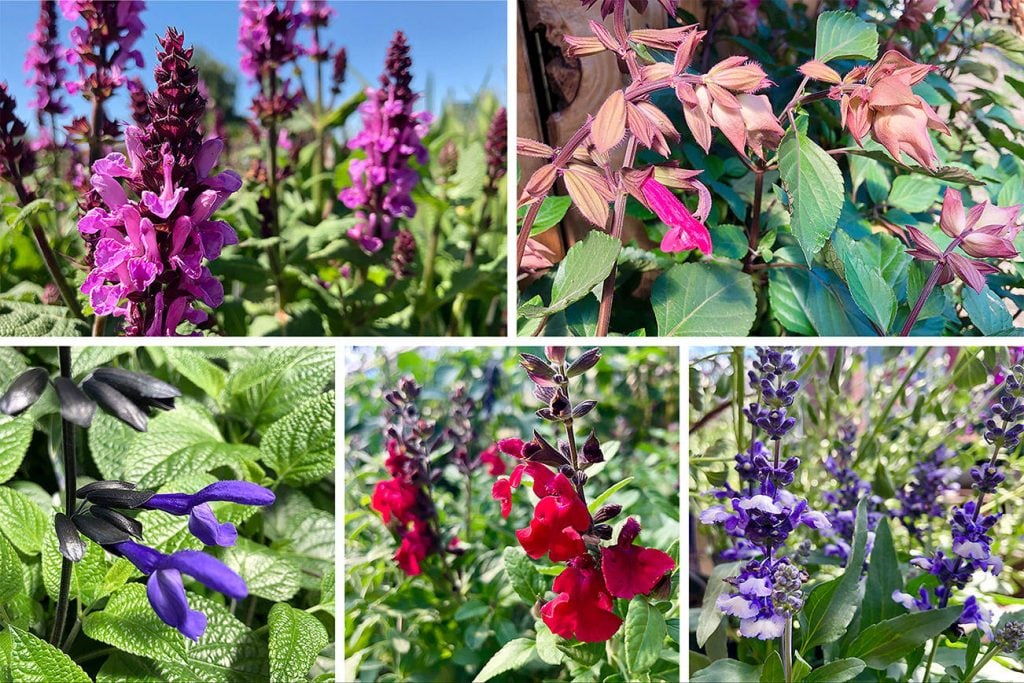
Salvias are categorized into four categories:
- Annual salvia: Includes varieties such as Salvia farinacea, S. horminum, and S. splendens. These plants are typically grown as summer bedding. But at the end of the season, they are thrown out.
- Herbaceous perennial salvia: Includes Salvia nemorosa and Salvia x sylvestris. These plants are robust and grow back every year.
- Tender perennial salvia: These plants may come back each year. They may require protection during winter. Salvia greggii belongs to this type.
- Shrubby salvia: These plants have woody stems and are considered sub-shrubs. While they are mostly hardy, some may require protection during harsh winters. Some may even appear evergreen in light winter. This type includes Salvia x jamensis and Salvia microphylla.
So if you’re looking to add some colour and texture to your outdoor or indoor space, keep reading to learn some expert tips on growing salvias in pots.
Best Soil for Growing Salvia
Salvia plants are quite flexible and bloom in a variety of environments. So, it is recommended that you begin with a basic potting mix and combine it in a 50/50 ratio with old compost for the greatest results. The optimal habitat for your salvia to flourish and bloom to its fullest can be done only by checking the pH level. Although drainage is crucial, salvia in pots dries out slightly more quickly than salvia planted in open ground. The majority of submerged roots will be eliminated by making sure your selected planter has adequate drainage channels on the bottom.
Planting Methods of Salvia
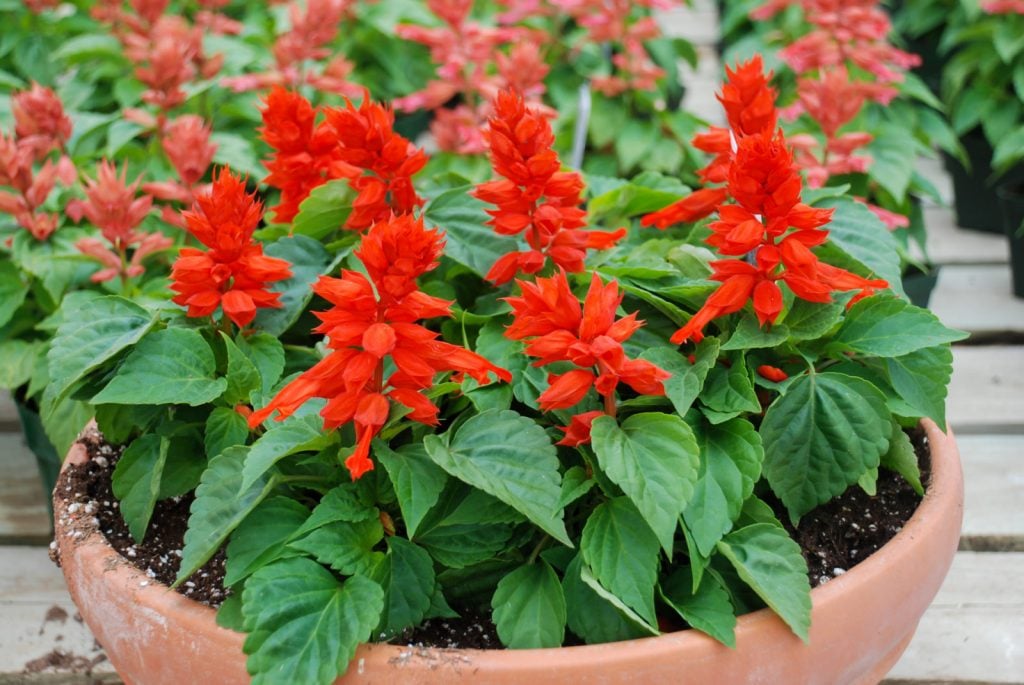
To ensure that salvias thrive, they require plenty of sunlight (ideally 6-8 hours per day) and soil that drains well. Although some varieties can tolerate partial shadow, those with lighter-coloured flowers tend to have reduced flowering in these conditions. If you plan on direct-sowing salvia seed outside, make sure to wait until the last frost in the spring. To prepare the soil, dig a pit of 12 inches in depth, and remove any stones and roots. Add a 3-inch thick layer of compost to the soil to supply nutrients.
If you are using acontainer to plant, add some sand/gravel to the compost to enhance the drainage system and also feed it in the spring. However, if the plant is grown in garden soil, it doesn’t need any feeding. Dig a pit twice as wide as the pot in which the plant fits, and level the base of the root with the surface of the soil. Depending on the variety, keep a space of 1 to 3 feet between two plants. Fill in all sides of the plant carefully, gently harden the soil, and water thoroughly.
Cutting Methods of Salvia
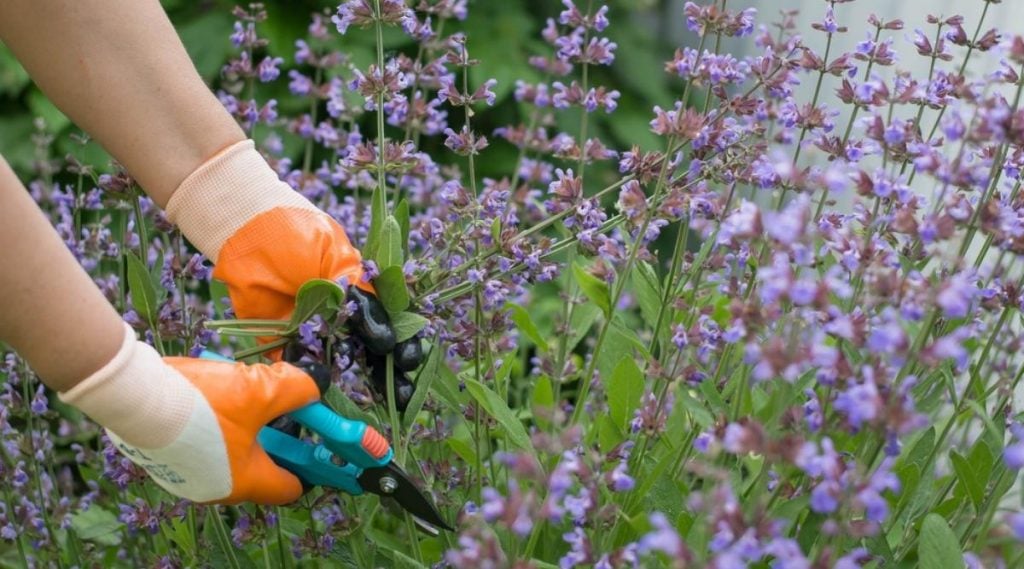
Taking cuttings is a great way to propagate your salvia plants, and it can be done in April and August for summer and September for autumn. To do so, look for stems without flowering that are around 8cm in length, and remove the leaves on the lower side. Cut every fragment just below the node, then insert it into a pot of compost that is watered beforehand. Use a clean bag of plastic to cover the pot, careful not to let the bag touch the foliage. Preserve the cuttings at a cool temperature. Make sure to keep it in shadow, away from harsh sunlight, to prevent searing. Prepare the cuttings to be planted in around three weeks.
How to Care For Salvia?

Your salvia will flourish in numerous locations around your landscape or indoor space with correct initial planting and periodic upkeep. Your potted salvia will grow into a strong, happy plant with amazing blooms if you maintain the soil moist and place it in full sun. However, once established, they can withstand drought. Since rain rarely reaches the compost in pots, salvia plants that are growing in containers require regular watering. Ground-based plants don’t require any additional feeding because they will produce more leaves than blooms on their own.
While growing salvias in a pot, they should be fed a high potash diet, such as tomato food, from spring through early autumn. Maintain flower growth by deadheading. On spikey racemes or panicles that rise above the plant, salvias bloom. Remove these spikes once blooms have faded to promote new blossoming. By July, if the salvia plant is overgrown, you can also chop off one-third of it.
Expert Growing Tips On Salvia
Fertilizing
It is preferable to mix good amounts of aged compost and potting soil when growing salvia for the first time in containers because this will give your plant an ideal chance to take root there. Occasional feeding may considerably benefit your salvia plant once it has established itself in the container of your choice because naturally generated nutrients are less likely to occur in containers. You can tell when your salvia needs to be fertilized by looking at the condition of its foliage and/or blossoms. Remove any existing soil from your potted salvia and cover the entire root base with a thin coating of seasoned compost to feed it. Water well and replace the mulch. Congratulations—it’s that simple to feed your salvia.
Pruning
Salvias that bloom annually don’t need to be pruned, but perennials may take advantage of it every spring. In the winter, herbaceous salvias that are deciduous will die again. Trim the previous stems at the shooting node that is placed in the lowest position with a pair of sharp shears. Cut the stems at the base if they have entirely perished. Pruning is necessary to keep hardy, shrubby salvias from growing straggly. After new growth appears in the spring, trim around one-third of the plant, cutting a little bit above a leaf pair to maintain a compact form and provide a base for new growth. For severe pruning, they can be removed down to the lowest nodes.
Pest Protection
Salvias are generally quite hardy and don’t suffer from many diseases, but there are a few things to watch out for. Powdery mildew, which appears as a greyish-white powder-like substance on the top of the leaves, is often caused due to wet or humid conditions. The decay of roots and stems can occur in soil that doesn’t drain properly. This may result in the accumulation of moisture at the roots and cause limp, black stems.
Small green bugs called Aphids, found on the bottom of leaves and stems, can also be a problem. Finally, whiteflies which are tiny white-coloured bugs found on the back of the leaves, tend to do well in warm and humid environments. Keeping an eye out for these common issues and taking steps to prevent them will help ensure that your salvias stay healthy and happy.
Growing Techniques of Salvia
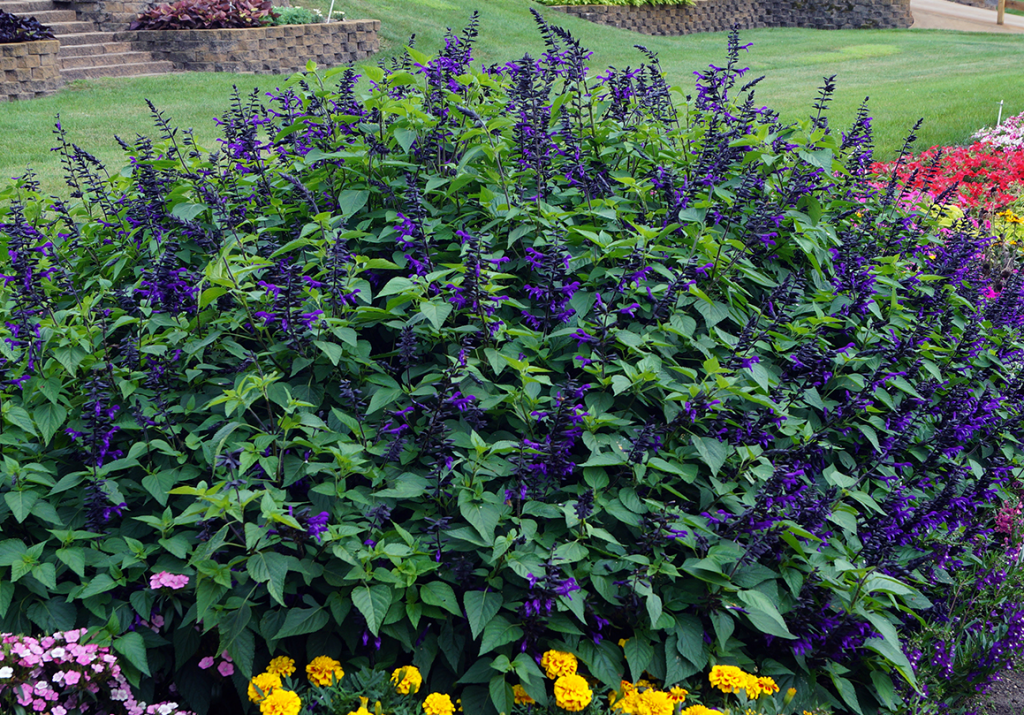
To keep salvias healthy, it’s important to put a two-inch thick layer of compost around all sides of the plant. This helps it to hold moisture and keep the weeds away. During summer, the plant needs to be watered depending on the rainfall. However, the plant should not be overwatered as it doesn’t thrive in excessive irrigation.
Additionally, you don’t need to feed salvia throughout the season, but it’s important to deadhead flowers periodically to promote constant blooms during the season. Towards the season’s end, it’s best to leave the flowers on the plants to stimulate another round of seeding and sustain the birds. Some salvias may develop lower stems that are woody over time, and if that happens, you can freely trim them. After the initial frost of the season, cut the stems short to about one or two inches above the soil line. If you have perennial salvias, it’s recommended to divide them in a few years, preferably at the beginning of spring before the start of new growth. Lift, and split into clumps before replanting. Finally, to keep your salvias healthy and thriving, it’s important to apply an additional new layer of manure every spring.
Designing Your Space with Salvia
Salvias offer a variety of flower colours, sizes, and long bloom times, which make them great additions to perennial borders. These plants complement other plants with bolder foliage and larger flowers. Some varieties, such as S. leucantha, bloom later in the year, offering a splendid autumn display and extending the gardening season.
In containers, shorter salvias work well as fillers or can be draped over the pot edge, while taller types can be the centrepiece. Consider planting salvias with pleasant-scented foliage near a path or patio to enjoy the fragrance. These plants attract butterflies, hummingbirds, and other pollinators, making them perfect for wildlife gardens.
Final Thoughts
All in all, gardeners who are short on space or want to add some colour to their balcony should definitely consider growing salvias. Potted salvias are also ideal for gardeners who live in extremely cold weather conditions.
The plant just needs to move indoors during colder months. They are also perfect for those who want to experiment with the arrangement of their garden, as they can be easily moved around. Just the soil conditions and drainage situation is essential for these plants to thrive.
Growing salvias in pots also allow you to expand their growing season. You can move the pots indoors during the winter and then move them back outside in the spring when the weather warms up.
You can place them on your work tables or display them on shelves. You can also hang them from hooks on your balcony. You can appreciate their beauty and admire their vibrant flowers up close.
Let us know where you are thinking of placing your potted Salvia plant.

![How To Prune Blueberry Bushes Based On Age [UK]](https://staging.thearches.co.uk/wp-content/uploads/How-To-Prune-A-Blueberry-Bush-By-Age.jpg)

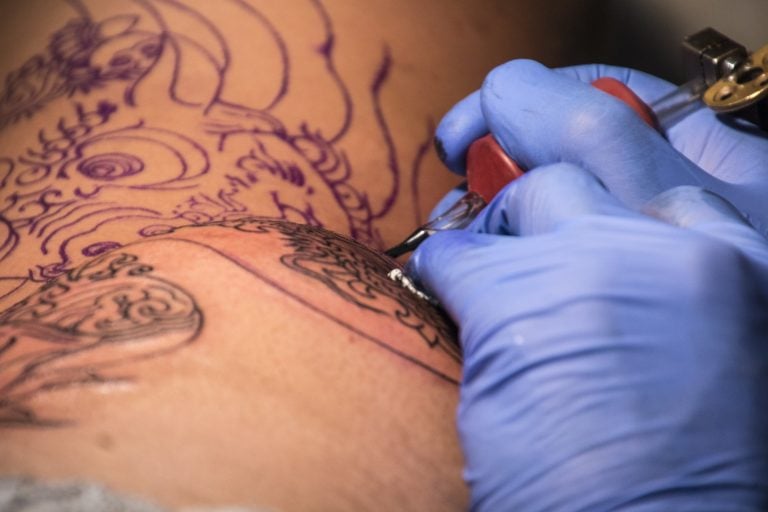
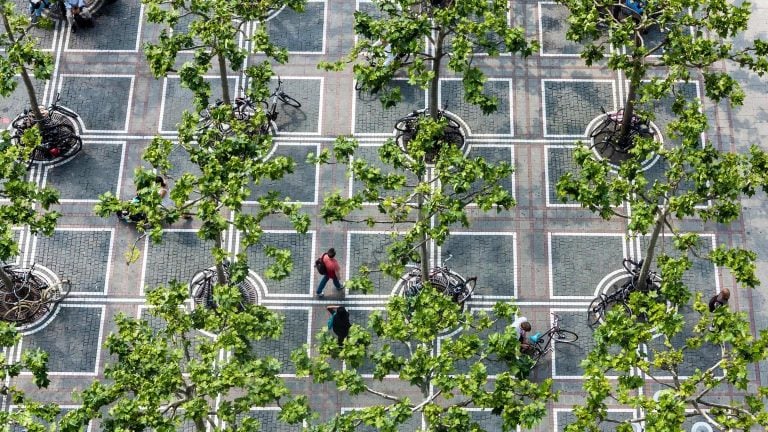
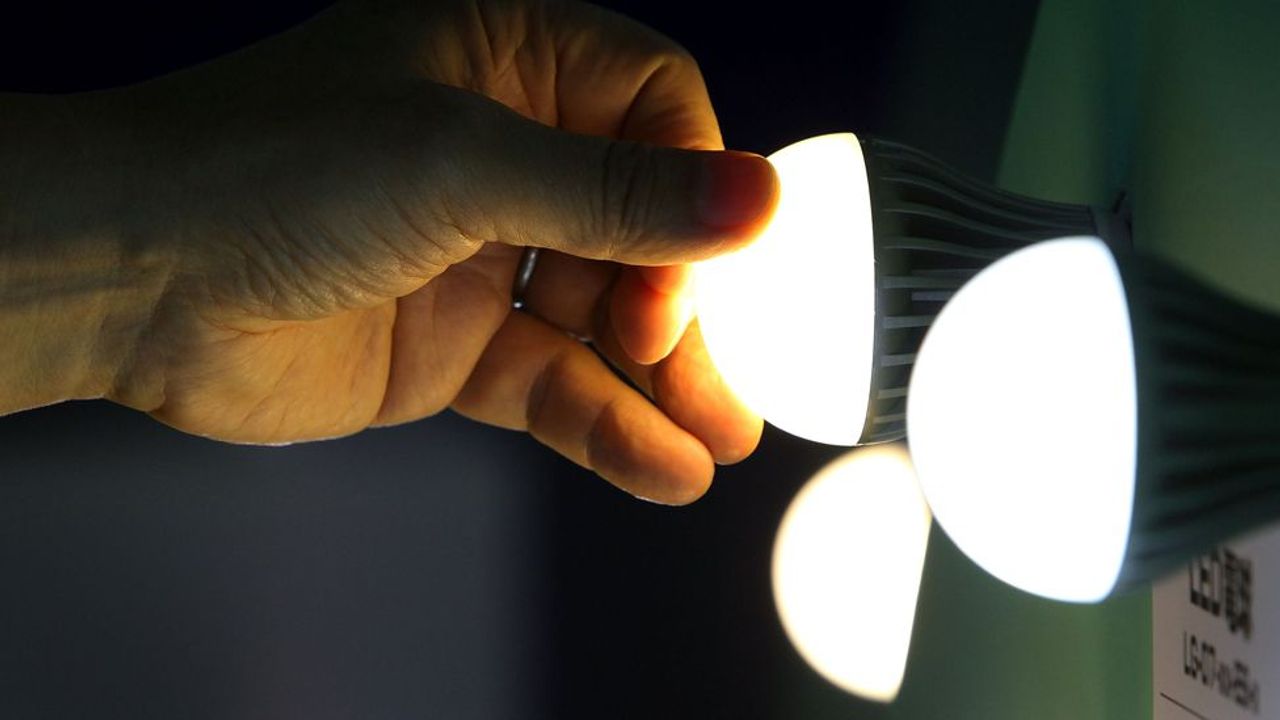
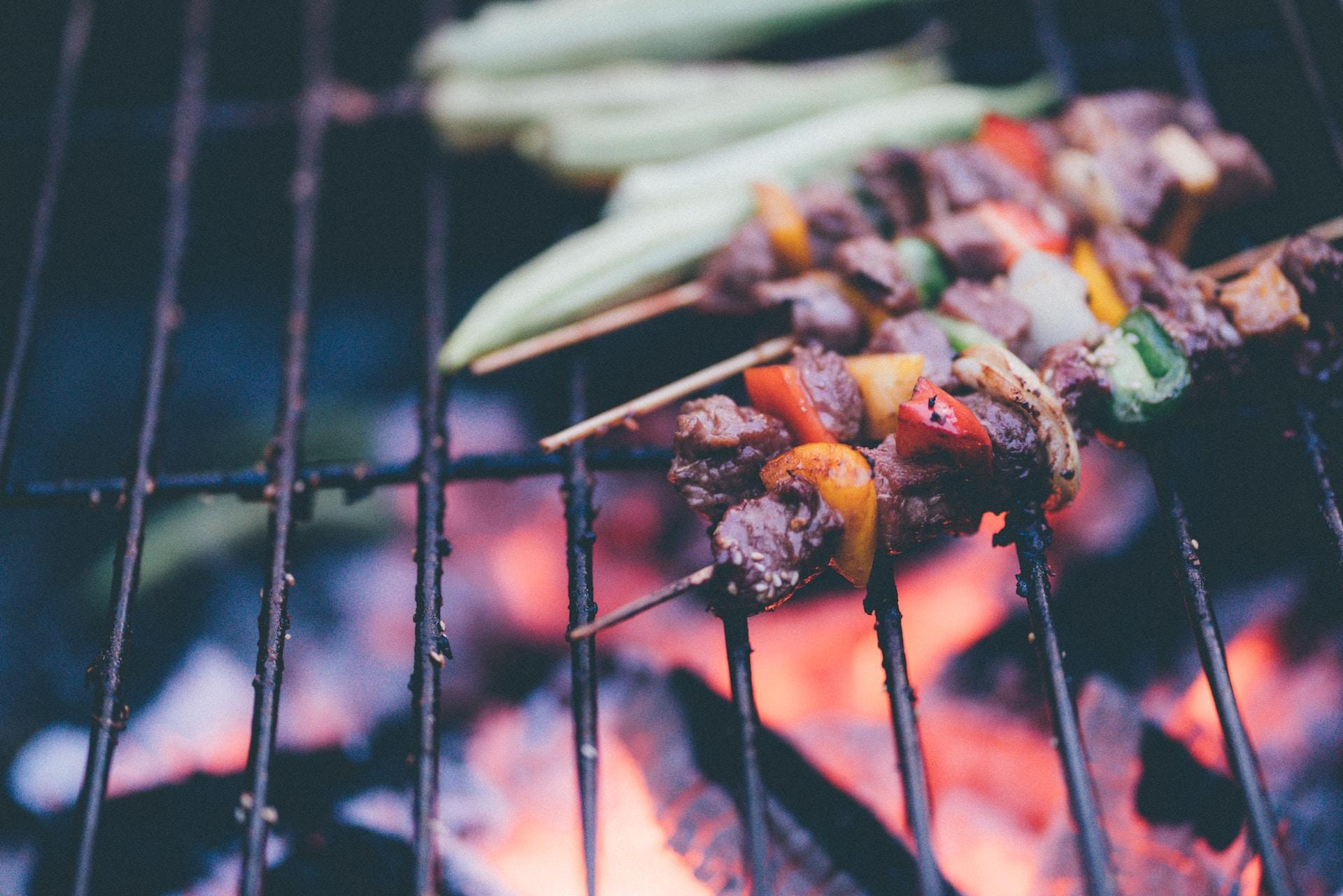
6 Comments